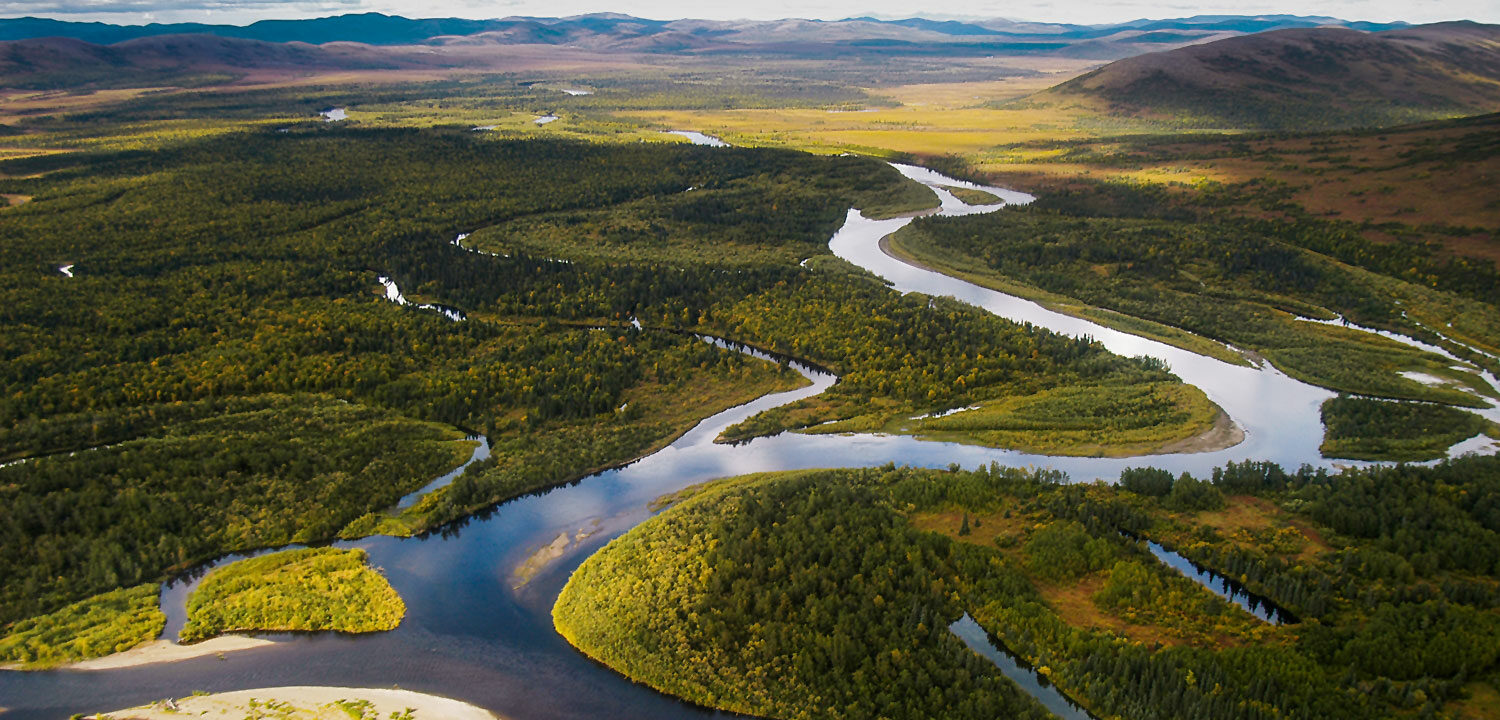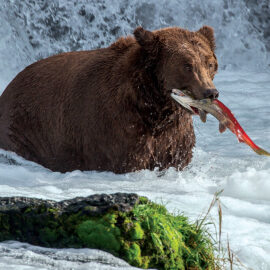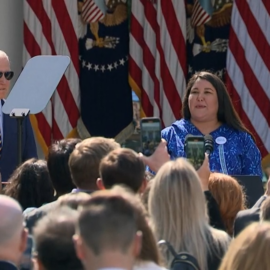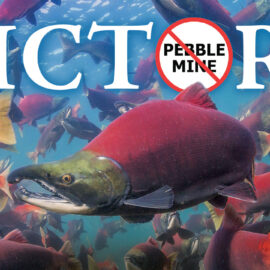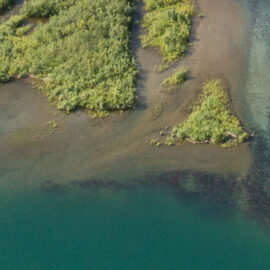Protecting Alaska’s greatest salmon fishery
Bristol Bay is home to one of the most important wild salmon fisheries on Earth. Annual sockeye salmon returns here top 60 million fish, feeding a wide variety of wildlife and human communities, from grizzly bears to Alaska Native families to a globally important commercial fishery.
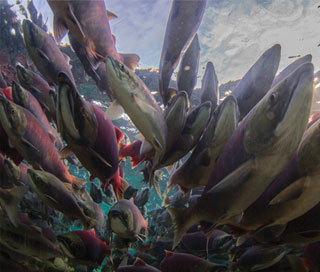
But the Pebble Mine threatens all of that.
The Mine
One of the greatest threats to Alaskan salmon is the proposed Pebble Mine at the headwaters of the Nushagak and Kvichak rivers in the Bristol Bay region. If constructed, Pebble would be one of the world’s largest open pit copper/gold/molybdenum mines, with an earthen dam 60-stories tall that would ultimately hold up to 10 billion tons of toxic tailings and contaminated water — forever. The mine and tailings lake would sit just north of Iliamna Lake, the largest lake in Alaska and one of the most important sockeye salmon nurseries in the world.
What’s at Stake
Hanging in the balance is a $2 billion-a-year salmon fishing economy and an important subsistence food source for Bristol Bay communities.
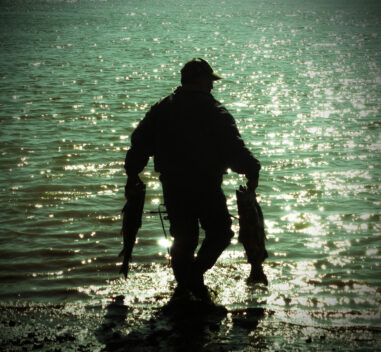
Commercial salmon fishing in Bristol Bay employs more than 15,000 people every year, from seasoned boat captains to young deckhands paying their way through college to workers in processing facilities.
The commercial fishery supplies as much as 57% of the world’s sockeye salmon catch, driving $990 million in economic activity in Alaska alone, and $800 million in induced impacts for the Pacific Northwest. Sportfishing tourism brings in at least $75 million a year to the local economy and draws fishermen and women from around the world.
Subsistence salmon fishing for 31 federally recognized Alaska Native tribes in Bristol Bay continues a tradition several thousand years old. Salmon is a critical food source — up to 65% of protein consumed in rural Alaska communities comes from salmon.
New Protections on the Table
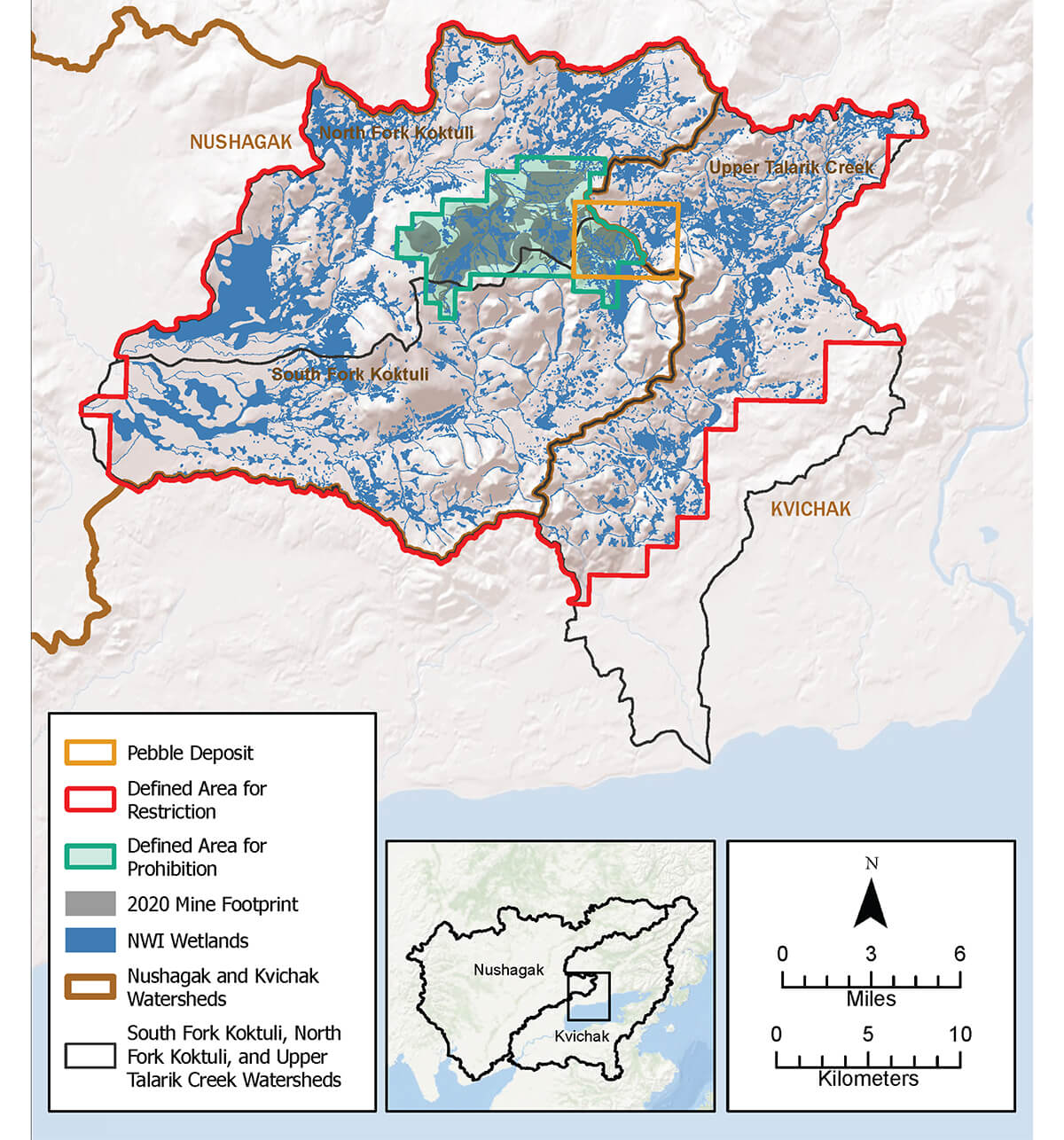
In January of 2023 the U.S. Environmental Protection Agency announced that Clean Water Act (“404c”) protections will safeguard the headwaters of Alaska’s Nushagak and Kvichak Rivers. This means that Bristol Bay’s headwaters—the nursery sustaining the world’s greatest remaining wild sockeye salmon fishery—are now off-limits to Pebble Mine. Wild Salmon Center will continue to work as part of the Bristol Bay Defense Fund to ensure the long term protection of this region.
Pebble Mine at a Glance
2005: Pebble East deposit discovered by Northern Dynasty, a Canadian company based in Vancouver.
In 2012, Wild Salmon Center developed a technical report that examines the threats to Bristol Bay’s wild salmon fisheries posed by the Pebble Mine.
In 2014, the Environmental Protection Agency initiated a process using its authority under the Clean Water Act to protect Bristol Bay’s headwaters. But that did not stop the Pebble Mine. Northern Dynasty, the mine’s sole remaining partner, launched a costly legal battle that stalled EPA’s efforts.
In May 2017, Northern Dynasty cut a deal with the Trump Administration’s new EPA administrator to reverse course and halt the Clean Water Act protection process. And later that year the mine filed for its federal permits to begin construction, under an extremely expedited schedule.
February 2019: The Army Corps of Engineers released a draft environmental impact statement, with an opportunity for public comment through July 1. But the Army Corps’ review fails to hold the Canadian mining company behind Pebble accountable on basic questions about how and where they plan to mine, and — mostly importantly — how they plan to protect the people, the clean water, the fishery, and the jobs of Bristol Bay.
June 2019: WSC calls out Pebble’s questionable lobbying of federal agencies and the Army Corps’ fast-tracked review with a new report.
September 2019: Alaskans and Bristol Bay allies around the country call on Alaska’s congressional delegation to hold the Army Corps accountable in the event that the mine cannot be built without harming Bristol Bay.
July 2020: With the final environmental impact statement showing that Pebble will directly impact 10,744 acres of wetlands and 335 miles of streams, Bristol Bay residents and supporters around the country call on for the Environmental Protection Agency to veto the mine.
November 2020: Pebble fails to earn a key permit for construction from the Army Corps of Engineers.
Fall 2021: EPA announces it will restart the process to protect Bristol Bay under the Clean Water Act.
2022: EPA releases a proposed determination for protecting Bristol Bay; EPA hosts public comment period that attracts 500,000 comments in favor of protections.
January 2023: EPA announces that Clean Water Act (“404c”) protections will safeguard the headwaters of Alaska’s Nushagak and Kvichak Rivers.
